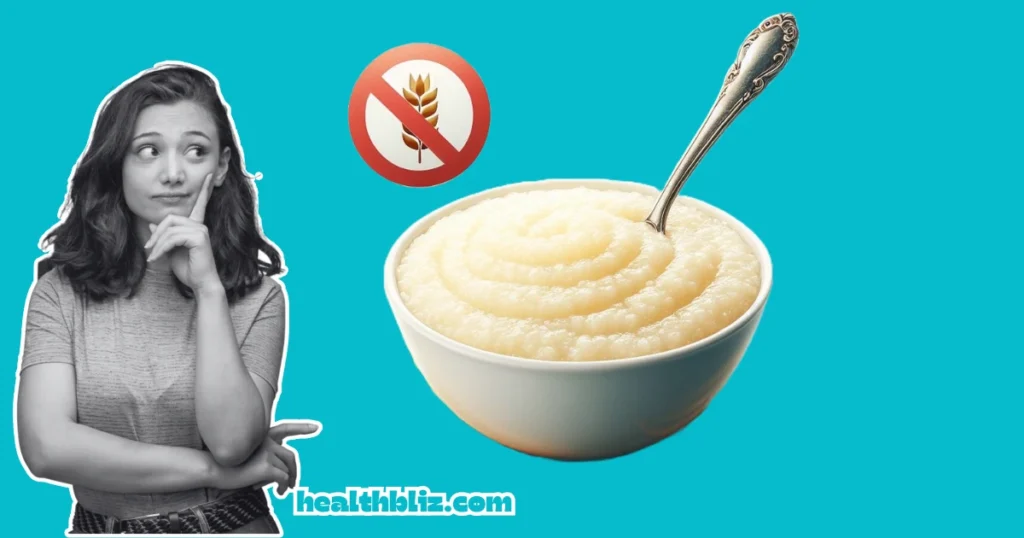
Grits are a traditional side dish that has been popular for centuries in the American South and Northern Italy. In fact, this popular porridge existed long before it became a Southern staple. In the 16th century, the Muscogee tribe of Native Americans created the dish.
What are grits?
Grits are similar to other dried corn-based foods, like cornmeal, and can be cooked in a variety of ways. When cooked in liquid, grits have a porridge-like consistency. Grits come in a variety of forms, including hominy, which is made from corn that has been softened through an alkali process. There are also instant grits and seasoning mixes available.
Grits are typically served as a base for toppings such as shrimp, roasted vegetables, fish, or greens and are frequently prepared with cheese and milk. They can also be used in sweet dishes, such as breakfast porridge.
There are several kinds of grits, for example:
- Hominy grits
- Instant grits
- Regular or quick grits
- Stone-ground grits
Are Grits Gluten-Free?
Traditional grits, in their purest form, are made from corn rather than wheat, barley, or rye. As a result, they are gluten-free and suitable for people following a gluten-free diet.
It is critical to check the brand of grits to determine whether they are safe for someone with celiac disease or non-celiac gluten sensitivity. This is because some brands of grits are manufactured in facilities that also process gluten-containing grains.
So, while grits are gluten-free in their purest form, if they become cross-contaminated with gluten during processing, they may no longer be safe for you, depending on your gluten sensitivity.
When grits are not gluten-free, it is usually because they were processed on the same equipment that processes gluten grains. It is financially advantageous for manufacturers to use shared equipment to process their various grain products, but the finished products may contain too much gluten cross-contamination to be considered truly gluten-free.
How to Choose Gluten-Free Grits
If you eat cross-contaminated grits, you may become “glutened,” even if the grits label states that they are only pure corn grits. Grits are occasionally made from unsafe grains, such as barley. That means you can’t just pick up any package of grits and assume it’s safe. Always check the ingredients to ensure that the package you’re selecting is one you can have.
Choose a gluten-free brand to ensure your grits are safe to consume. The legal limit in the United States is less than 20 parts per million (less than 0.002%) of gluten. 2 While your grits may still contain trace amounts of gluten, you won’t know how you’ll react until you try them.
Keep track of any symptoms you experience after eating grits, including gluten-free ones. Everyone with celiac disease responds differently to trace amounts of gluten.
How to Serve Grits
There are several ways to serve grits, including savory and sweet options. They can be used as a base for vegetables and protein or eaten on their own with basic seasonings. Cheese, milk, green onions or scallions, chicken stock, butter, garlic, salt, and pepper are common add-ins.
Grits are frequently topped with a variety of protein options. Probably the most well-liked is shrimp. Additional protein choices include beans, shredded beef or pork, grillades (made from round steak), ham, fish, and eggs.
Toppings made of vegetables are also very popular. Collard greens, spinach, mushrooms, whole corn kernels, okra, and peppers are common vegetable toppings.
Sweet grits are a grain alternative for gluten-free diets, but they’re also delicious and add variety to your breakfasts despite being less popular. Try them with toasted almonds or coconut on top of sautéed or poached pears, apples, or peaches. A traditional touch is to add butter and honey.
Grits: Gluten-Free Cooking Tips
Grits cooking instructions are usually included on the packaging; however, if they are not, a standard ratio is one cup of grits to 4 or 5 cups of water. Modify the water quantity to achieve your preferred consistency—more water for a thinner texture and less for a thicker one. Grits can be prepared with milk, cream, or a variety of broths, allowing for diverse culinary possibilities.
Grits, a traditional side dish from the American South and Northern Italy, originated in the 16th century by the Muscogee tribe. Similar to cornmeal, they can be cooked in various ways and are often served as a base for toppings like shrimp, vegetables, fish, or greens. They can also be used in sweet dishes.
Frequently Asked Questions
Q1: Are grits from corn or wheat?
A1: Grits are from corn.
Q2: Are all grits made from corn?
A2: Yes, all grits are made from corn.


